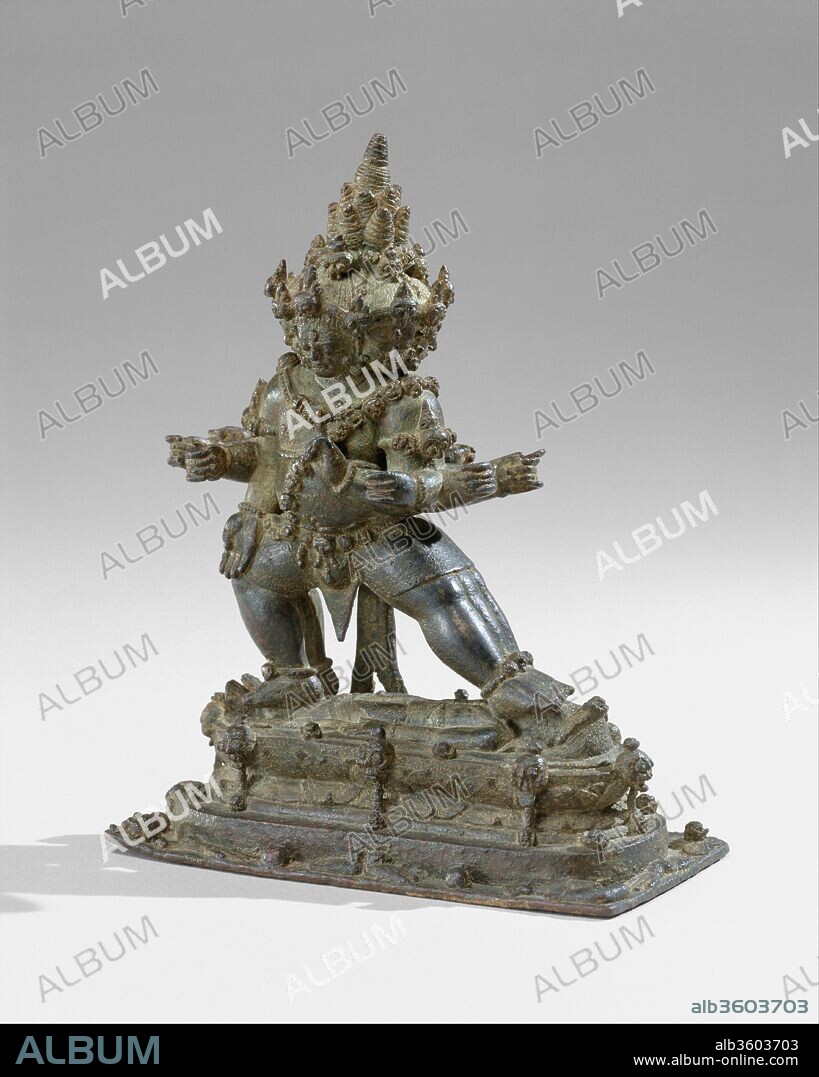alb3603703
The Buddhist Guardian Mahabala

|
Zu einem anderen Lightbox hinzufügen |
|
Zu einem anderen Lightbox hinzufügen |



Haben Sie bereits ein Konto? Anmelden
Sie haben kein Konto? Registrieren
Dieses Bild kaufen

Titel:
The Buddhist Guardian Mahabala
Untertitel:
Siehe automatische Übersetzung
The Buddhist Guardian Mahabala. Culture: Indonesia (Java). Dimensions: H. 6 1/2 in. (16.5 cm). Date: 11th century.
According to certain traditional programs of Esoteric Buddhist iconography, Mahabala, similar to Yamantaka, is the conqueror of the lord of death and, by extension, of death itself. As a guardian of the faith (dharmapala), he is depicted as a fierce deity, shown here trampling a prostrate male, perhaps signifying death.
The powerful, corpulent protector adopts the aggressive stance of pratyalidha, a posture often used by figures trampling foes. His lowered right hand is in the boon-granting gesture and his raised left is in a sign of warning or menace. Mahabala is depicted with six heads, six legs, and twelve arms. Of the six faces, only one is pacific; the rest are wrathful, fanged, and terrifying. All of the heads wear diadems of skulls, and the deity wears a matching necklace and a sacred thread composed of skulls alternating with lotuses. Mahabala's hair is a series of spiraling conical forms, which heighten the sense of a great pyramidal mass being supported by the shoulders.
Mahabala frequents cemeteries, and his necropolitan associations--torsos, limbs, skull bones, and flayed skin--are graphically depicted around the base of the sculpture. Amid this grisly reminder of mortality, one macabre smiling head appears on the side of the base.
Technik/Material:
Bronce
Zeitraum:
Eastern Javanese period
Museum:
Metropolitan Museum of Art, New York, USA
Bildnachweis:
Album / Metropolitan Museum of Art, NY
Freigaben (Releases):
Model: Nein - Eigentum: Nein
Rechtefragen?
Rechtefragen?
Bildgröße:
3276 x 4094 px | 38.4 MB
Druckgröße:
27.7 x 34.7 cm | 10.9 x 13.6 in (300 dpi)
Schlüsselwörter:
 Pinterest
Pinterest Twitter
Twitter Facebook
Facebook Link kopieren
Link kopieren Email
Email
